Black Chokeberry: Grow & Care for Aronia melanocarpa
Written by Iris
Dec 14 2021
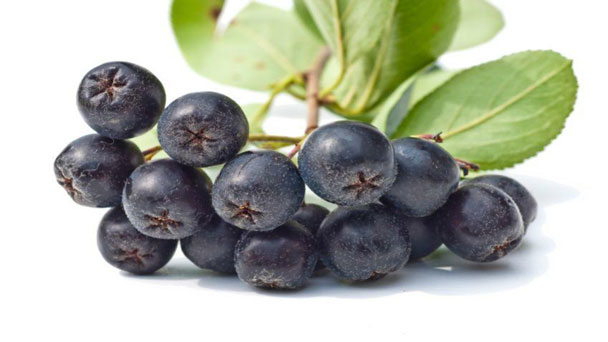
Black Chokeberry (Aronia melanocarpa) comes in a smaller, more pleasurable form than its red fruit relatives. Black Chokeberry is an extremely hardy deciduous shrub that ripens within five years, and it is popular throughout the Midwest. Left unchecked, these Black Chokeberries can form communities that provide food and shelter for wildlife. Black Chokeberries are decorated with larger leaves, fruit, and flowers, and end the growing season with a more spectacular fall color than red bitter berries.
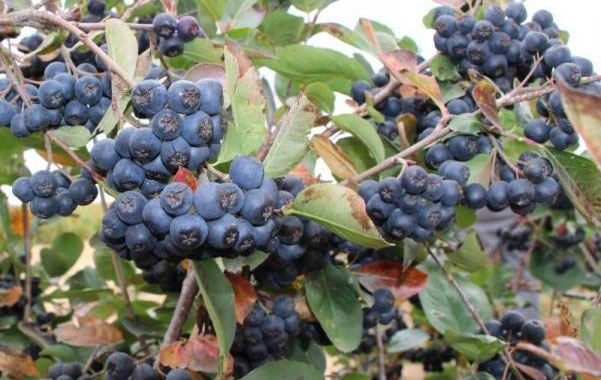
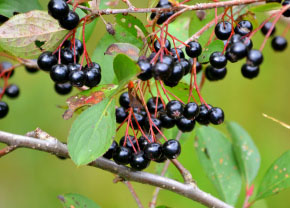
Soil preparation for Black Chokeberry plants is very similar to other berries. You can improve the soil by adding organic matter like some aged manure and compost/humus in the late autumn. Carefully dig everything in and repeat the process in late winter again. Use organic mulch around the shrubs to enrich your soil with nutrients. If you have sandy or heavy soil in your garden, be sure to mix your soil with plenty of compost, aged manure, or peat before planting plants to ensure optimal conditions for growing Black Chokeberries.
Black Chokeberry is moderately tolerant of some shade and grows very well in full sunlight. You can get new Black Chokeberry plants by slicing off the suckers and planting them in new locations.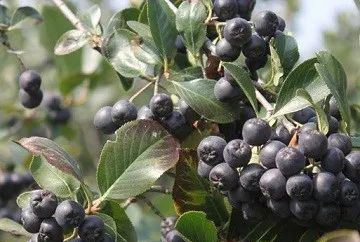
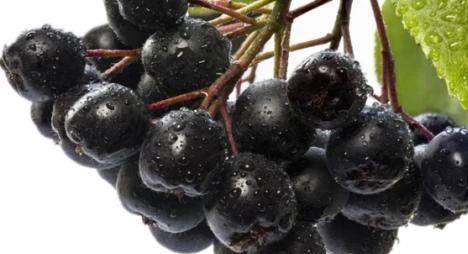
‘Autumn Magic’: This shrub has a more compact growth habit than the main species plant but with large clusters of fruit.
‘Iroquois Beauty’: This variety also has a compact growth habit and features particularly vivid fall color.
‘Viking’: This variety is known for its large black fruit and also sports vivid fall color.
‘McKenzie’: This is a tall variety that can grow up to 12 feet.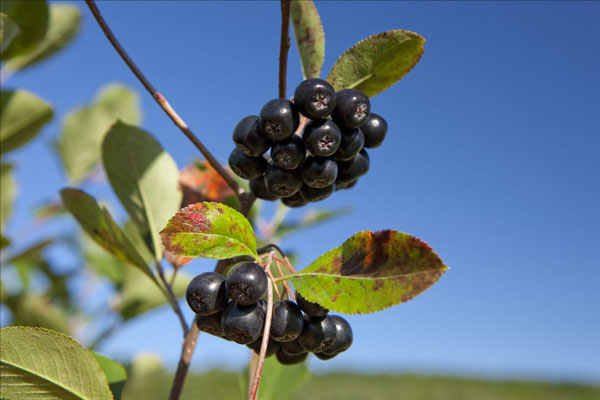
Where to Grow Black ChokeberryWhen to Grow Black ChokeberryHow to Grow Black ChokeberryGrow Black Chokeberry from SeedsGrow Black Chokeberry from Stem CuttingsHow to Care for Black ChokeberryBlack Chokeberry Light RequirementsSoil for Black ChokeberryBlack Chokeberry WateringBlack Chokeberry Temperature & Humidity CareFertilizer for Black ChokeberryPruning Black ChokeberryBlack Chokeberry Pests & Diseases CareVarieties of Black ChokeberryBlack Chokeberry Plant Care FAQAre chokeberries deer resistant?Is black chokeberry poisonous?How big does a black chokeberry bush get?
Where to Grow Black Chokeberry
Plant Black Chokeberry in a site that receives full to partial sun. Plants will produce the most flowers and berries when they receive at least 6 hours of full sun per day. Too much shade will result in weak growth and poor production.When to Grow Black Chokeberry
Black Chokeberry plant can be planted in spring or fall when the weather is moderate.
How to Grow Black Chokeberry
Grow Black Chokeberry from Seeds
Reproduction of Black Chokeberry is primarily by seed. The seeds are small, being slightly more than 1/16 inch long. There are about 276,000 seeds per pound, and about 100 pounds of fruit is needed to produce a pound of seed. Once the fruit is harvested in the fall, it should be cleaned. For small amounts of fruit, a kitchen blender can be used to macerate the fruit. For larger amounts of fruit, a commercial macerator does a good job of crushing the fruit. Quite a bit of pulp can be removed by floating it off. After the seed and remaining pulp have been thoroughly dried, hand screens or a fanning mill can be used to separate the seed from the remaining dried pulp. Chokeberry seeds have an internal dormancy that can be overcome by being stratified in moist peat for three months between 33°F and 41°F. For nursery-scale production of Black Chokeberry seedlings, it is recommended that the seed be sown in September. The best germination occurs from seed that has been cleaned. Poor germination results from seed that has not been separated from the pulp.Grow Black Chokeberry from Stem Cuttings
Propagation of cultivars of black chokeberry is straightforward from softwood or semi-softwood cuttings. Softwood cuttings in late May-early June, to be rooted in well ventilated frames, or hardwood cuttings with piece of 3-year-old wood attached.
How to Care for Black Chokeberry
Black Chokeberry Light Requirements
You can plant a black chokeberry shrub in either full sun or partial shade. But you will get the best flowering and fruiting in locations with full sun, meaning at least six hours of direct sunlight on most days. In too much shade, the shrub will likely only minimally flower and fruit, and it will produce weak growth that ultimately could kill the plant.Soil for Black Chokeberry
Black Chokeberry plants are not very picky about the soil in which they are established. A wide range of soil types is suitable for these bushes. The shrubs of Black Chokeberry are doing well in wet winter soils with slow drainage and are resistant to dry summers, too. The optimal soil is slightly acidic with pH between 6 and 6.5.Soil preparation for Black Chokeberry plants is very similar to other berries. You can improve the soil by adding organic matter like some aged manure and compost/humus in the late autumn. Carefully dig everything in and repeat the process in late winter again. Use organic mulch around the shrubs to enrich your soil with nutrients. If you have sandy or heavy soil in your garden, be sure to mix your soil with plenty of compost, aged manure, or peat before planting plants to ensure optimal conditions for growing Black Chokeberries.
Black Chokeberry Watering
Watering Black Chokeberry plant is needed for maximum fruit production. When dry, water the plants once or twice a week. Be sure to water the shrubs right after planting. Best time to water is in the early morning hours until 8 a.m. The plants are most receptive to water at this time. In the morning the plant’s roots are effectively receiving water and the cells of the leaves open up to take in the morning dew. Never water while the sun shines. On of the most significant factor for reduced berry size and fruit yield is a lack of water.Black Chokeberry is moderately tolerant of some shade and grows very well in full sunlight. You can get new Black Chokeberry plants by slicing off the suckers and planting them in new locations.

Black Chokeberry Temperature & Humidity Care
Black chokeberry has good tolerance for both the cold and hot temperatures of its growing zones. It flowers fairly late in the spring to avoid frost. But if there happens to be a late frost, this can damage the blooms and affect later fruiting for that growing season. So if your area does expect frost when your shrub is in bloom, consider covering the shrub with a sheet to protect it. Moreover, humidity typically isn’t an issue for the shrub as long as there is good air circulation around the foliage to prevent fungal diseases.Fertilizer for Black Chokeberry
Apply a balanced, slow-release fertilizer annually, if desired, to promote Black Chokeberry plant growth. Fertilizer applications are often unnecessary for the chokeberry shrub, particularly if nutrient-rich amendments were worked into the soil before planting and an organic mulch is used around the shrub.Pruning Black Chokeberry
Regular pruning is important in the cultivation of Black Chokeberry. Prune to remove dead and weak branches every year to promote growth and more fruits. Fertilization is often unnecessary for chokeberries, nevertheless if the soil is poor or the plant needs a boost balanced fertilizer can be applied in spring.Black Chokeberry Pests & Diseases Care
Black Chokeberry bushes are not prone to disease or to pests. They will rarely develop leaf spots or rust. Both of these are fungal-type infections and are cosmetic in nature. They can be avoided if you water your black chokeberry bush at the ground level rather than drenching the foliage with water. Plenty of elbow room will allow good airflow around the leaves, too, which will help prevent disease or damage.
Varieties of Black Chokeberry
There are several varieties of black chokeberry that vary slightly in appearance, including:‘Autumn Magic’: This shrub has a more compact growth habit than the main species plant but with large clusters of fruit.
‘Iroquois Beauty’: This variety also has a compact growth habit and features particularly vivid fall color.
‘Viking’: This variety is known for its large black fruit and also sports vivid fall color.
‘McKenzie’: This is a tall variety that can grow up to 12 feet.

Black Chokeberry Plant Care FAQ
Are chokeberries deer resistant?
Younger Black Chokeberry plants are more susceptible to deer browsing. Protect with fencing or another barrier until well established. Overall resistance depends on the time of year and the amount of competition for food. Browsing becomes less of a problem later in the season when other food sources are plentiful.Is black chokeberry poisonous?
Under certain conditions, their leaves can be very poisonous to livestock." ... Generally, all parts of plants from the Prunus genus are considered poisonous, but those in the photinia genus are not. From earthday coalition: "The fruit of the black chokeberry, while bitter raw, makes excellent jellies, jams, and juices.How big does a black chokeberry bush get?
General: A member of the Rose family, black chokeberry is a deciduous shrub that can grow to a height of 3 to 12 feet tall. The fine-toothed leaves are medium green and hairless, with raised glands along the top of the midrib. In spring, the bisexual flowers form clusters that are 2 to 2 ½ inches across.Latest Updated
- Benefits of Bugleweed - 7 Science-backed Health Benefits
- Bugleweed Dangers & Side Effects - Is It Poisonous?
- How to Plant Evergreen Trees - What You Should Know
- When to Plant Evergreens - Grow Guide for Evergreen Trees
- 12 Wonderful Evergreen Shrubs for Your Garden
- 12 Popular Evergreen Plants with Pictures for Beginners
- When And How To Prune A Lilac Bush Like a Pro
- How to Grow & Care for Lilac Vine (Hardenbergia Violacea)
- Japanese Lilac Tree (Syringa Reticulata) Care & Propagation Guide
- Shumard Oak Pros and Cons - What to Know
Popular Articles
- Winter maintenance of Antirrhinum Majus
- How to Grow Terminalia Mantaly Tree
- How to Grow and Care for Crossostephium Chinense
- How to grow Antirrhinum Majus in spring
- Peristeria Elata (Dove Orchid) Profile: Info & Care Guide
- Underwatered Snake Plant (Sansevieria Trifasciata) - Signs And How To Fix
- How to Care for Brazilian Jasmine Plant (Mandevilla Sanderi)
- How to Grow & Care for Graptopetalum Purple Delight in Summer
- Rosa Chinensis (China Rose): Plant Growing & Care Tips
- How to Care for Baby Sun Rose (Aptenia Cordifolia)